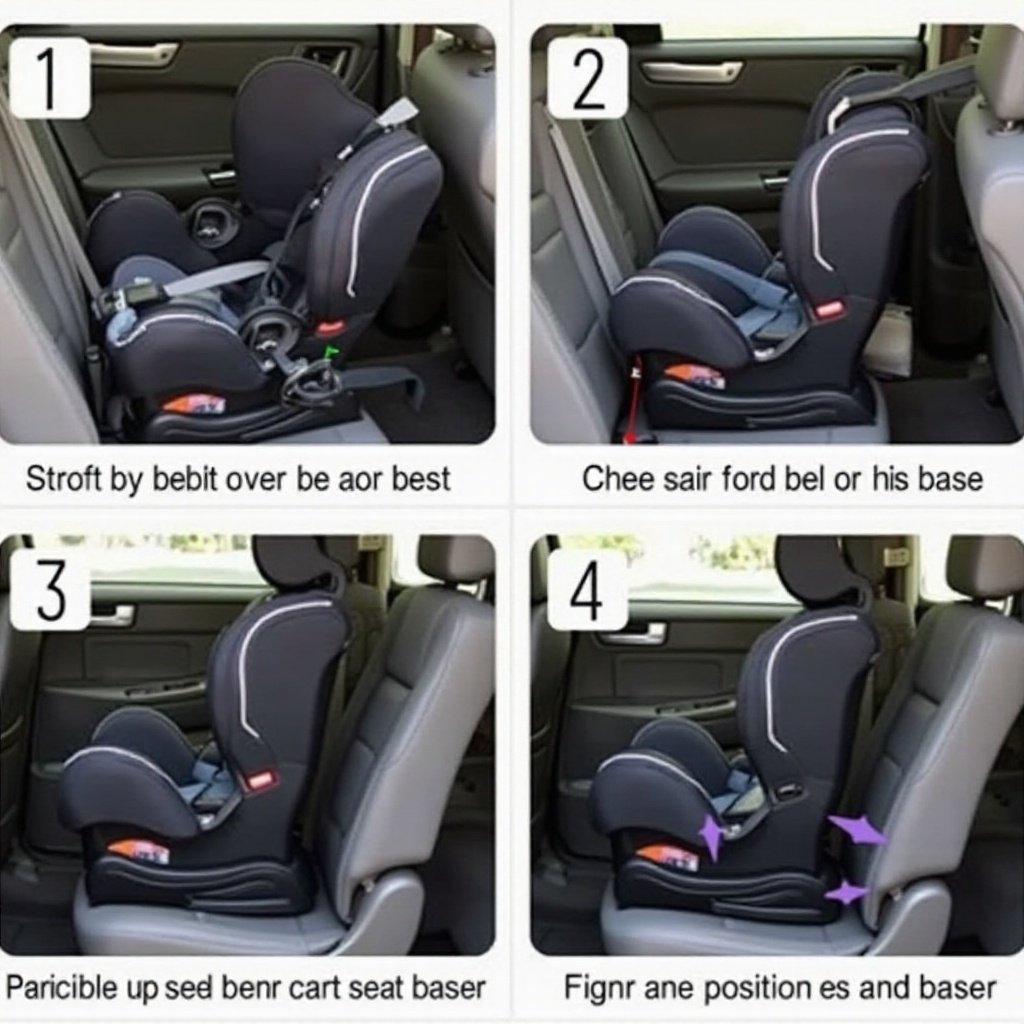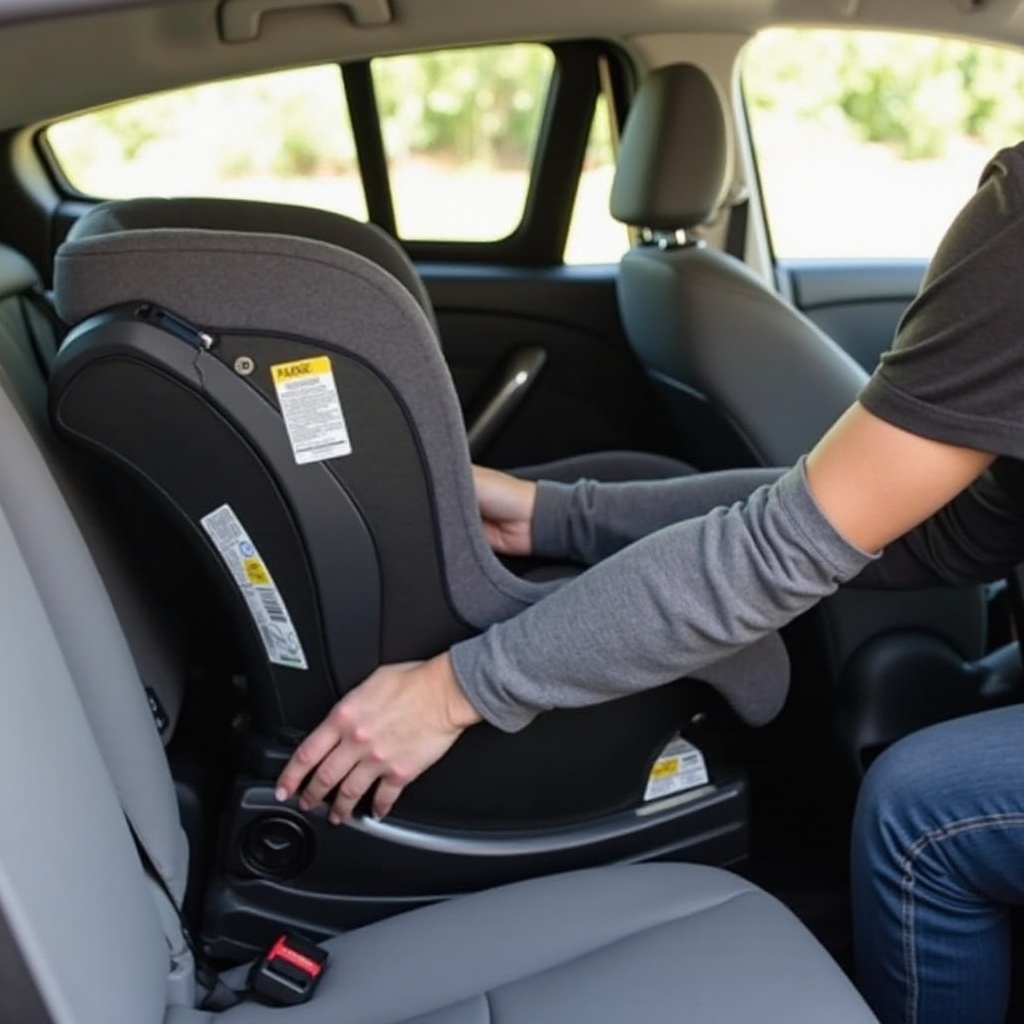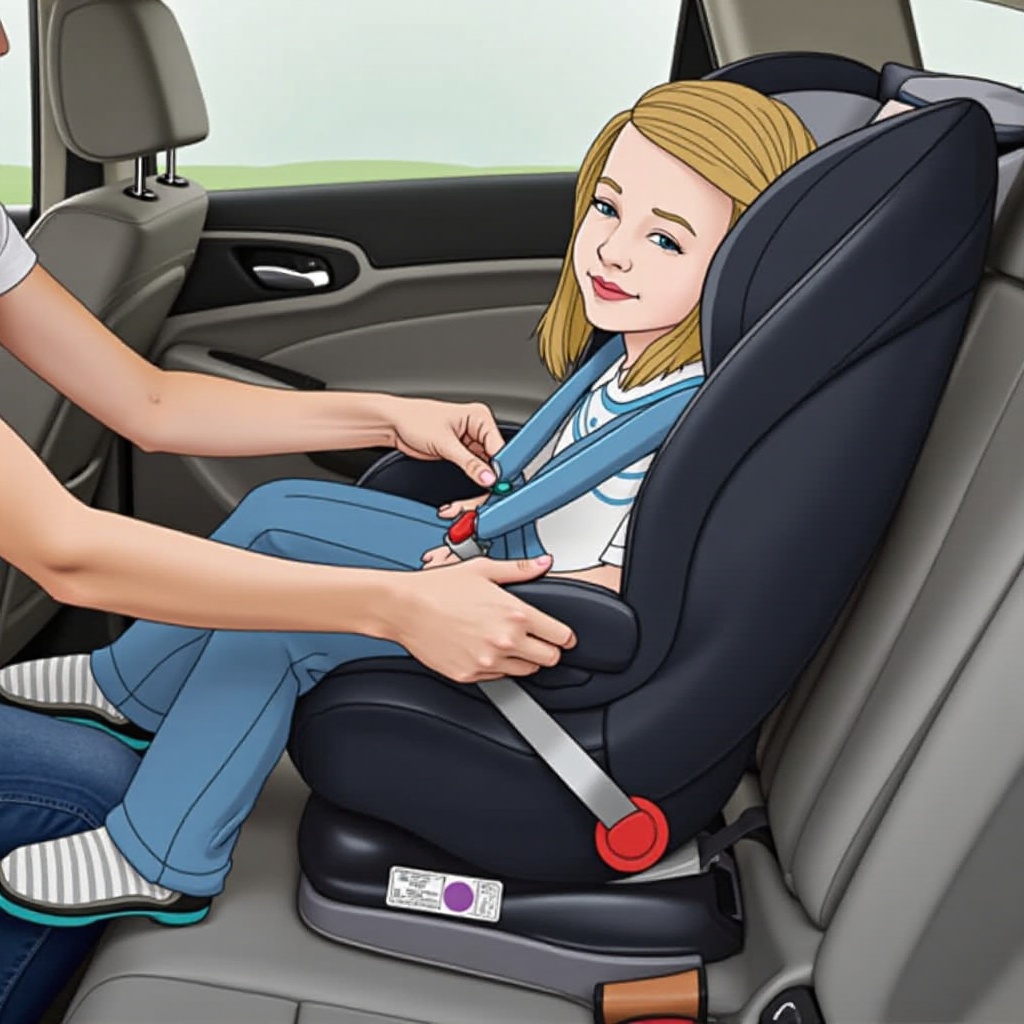Introduction
Buckling a car seat without using a base can be a challenge for many parents. Installing a car seat properly is crucial for your child’s safety during car rides. This guide provides a step-by-step process on how to buckle a car seat without a base, ensuring a safe and secure fit every time. We will also cover common mistakes to avoid and the importance of checking compatibility and reading manuals.

Understanding Different Car Seat Types
Selecting the right type of car seat is the first step toward ensuring your child’s safety. Car seats come in various types, including infant car seats, convertible car seats, and booster seats. Infant car seats are designed for newborns and smaller babies, typically up to 35 pounds. These seats are rear-facing and often come with a base for easy installation.
Convertible car seats can be adjusted as your child grows, converting from rear-facing to forward-facing. They are larger and heavier than infant car seats but offer extended usability. Finally, booster seats are for older children who have outgrown their forward-facing car seats but are not yet big enough to use a standard seat belt.
Choosing the right type of car seat that aligns with your child’s age, weight, and height is essential for a secure journey.

Pre-Installation Steps
Checking Car Seat Compatibility
Before installing a car seat without a base, ensure that it is compatible with your vehicle. Check the car seat’s label and your vehicle’s owner’s manual to confirm that the seat can be installed without a base.
Reading Manuals and Guidelines
Both your car seat and vehicle come with detailed manuals. Spend some time reading these manuals to understand the specific installation requirements. Following the guidelines closely will help you avoid any missteps during installation.
Step-by-Step Guide to Buckling a Car Seat Without Base
Having understood the different types of car seats and pre-installation requirements, it’s now time to get hands-on.
Positioning the Car Seat
-
Place the car seat in the rear seat of your vehicle. Ensure it is rear-facing unless your child meets the age and weight requirements for a forward-facing position.
-
Make sure the car seat is positioned at the correct angle, using the built-in angle indicator to guide you.
Routing the Seat Belt
-
Pull out the vehicle’s seat belt and thread it through the designated belt path on the car seat.
-
For rear-facing seats, this typically involves routing the belt through slots on the car seat’s base.
-
For forward-facing seats, route the belt through the belt path at the back of the seat.
Securing and Tightening the Seat Belt
-
Buckle the seat belt and lock it into place.
-
Press down firmly on the car seat while tightening the belt, ensuring it is as tight as possible without allowing excess slack.
-
Double-check the belt’s path and locking mechanism to ensure it is secure.
Ensuring a Safe and Secure Fit
Tightness Check
Once the seat is installed, conduct the ‘inch test’: Try to move the seat side-to-side and front-to-back. A properly installed seat should not move more than an inch in any direction.
Angle and Recline Adjustment
Ensure the car seat is at the appropriate recline angle. Many car seats have an adjustable recline feature; use it to make sure the seat is tilted correctly for your child’s age and size.
Common Mistakes to Avoid
Ensuring that the seat is properly secured and tight is crucial to child safety.
Incorrect Seat Belt Routing
A common error is routing the seat belt incorrectly. Ensure that the seat belt follows the proper path indicated in the car seat manual. Misrouting the belt can lead to an insecure fit.
Under-tightening the Seat Belt
A loosely tightened seat belt can compromise the car seat’s safety. Apply firm pressure and tighten the seat belt as much as possible while securing the car seat.
Useful Accessories and Tools
Consider using accessories such as seat protectors to prevent damage to your vehicle’s upholstery. Tools like a seat belt locking clip can help secure the seat belt better, ensuring a more stable installation.

Conclusion
Buckling a car seat without a base can seem daunting, but with careful attention to detail and adherence to guidelines, you can ensure a safe and secure fit for your child. Always double-check your work, conduct regular tightness tests, and stay informed about your car seat’s specifications and limitations. Ensuring your child’s safety during car rides is paramount, and taking these steps will help you achieve peace of mind.
Frequently Asked Questions
Can I use a car seat without its base in any vehicle?
Most car seats are designed to be used without a base in any vehicle, but always check the car seat manual and your vehicle’s owner manual to ensure compatibility.
How often should I check the tightness of the seat belt?
Check the tightness of the seat belt regularly, ideally before each car ride. This ensures the car seat remains securely fitted and safe for your child.
What can I do if the car seat moves more than an inch side-to-side?
If the car seat moves more than an inch, recheck the seat belt routing and retighten the belt. Consider using a seat belt locking clip for added security.
